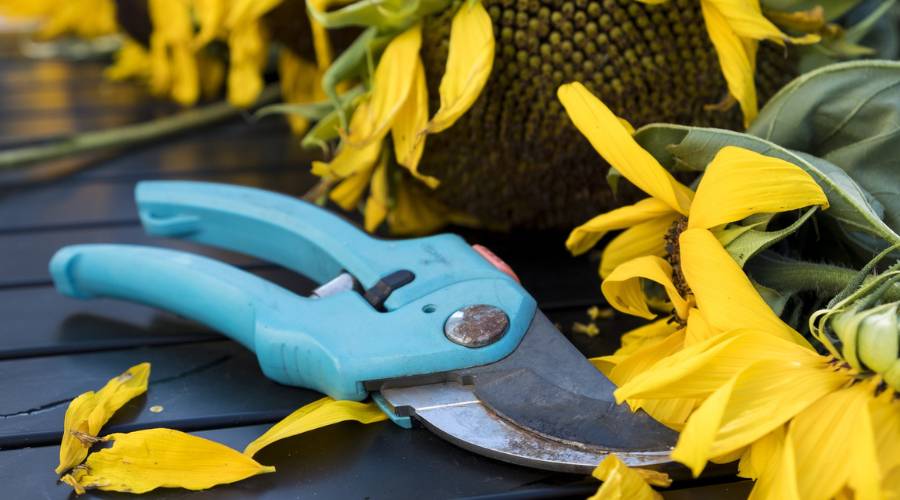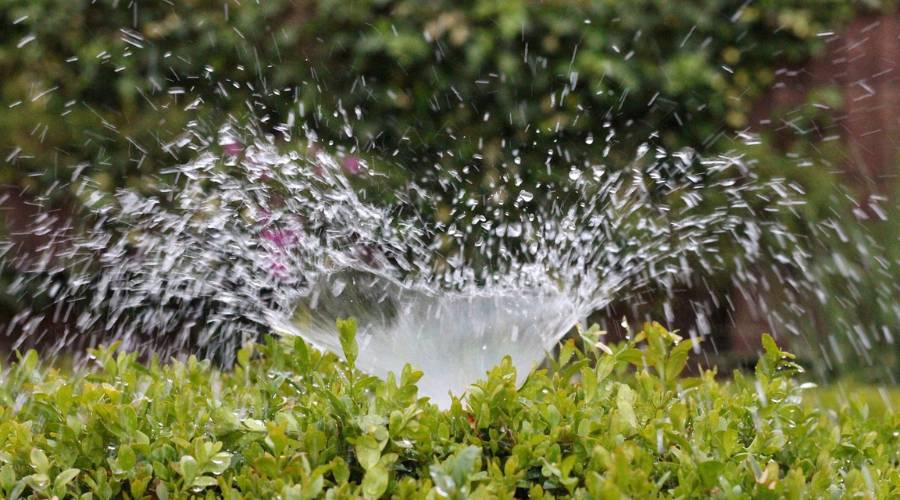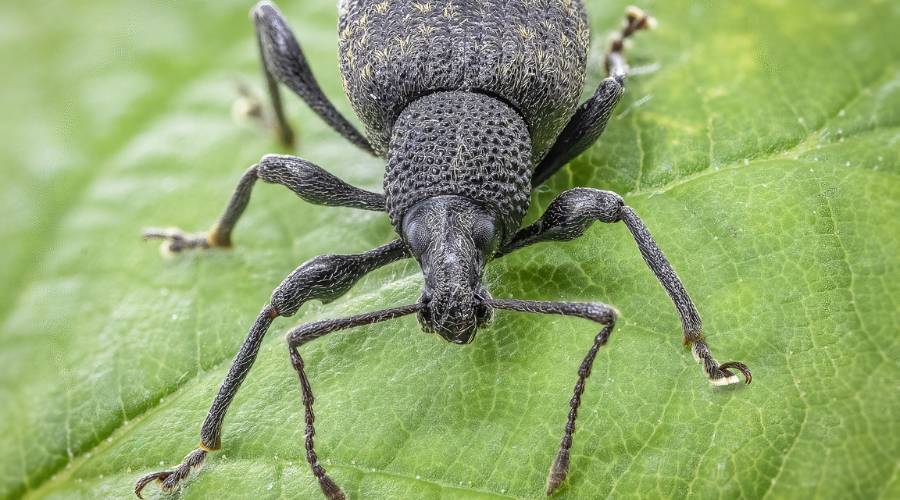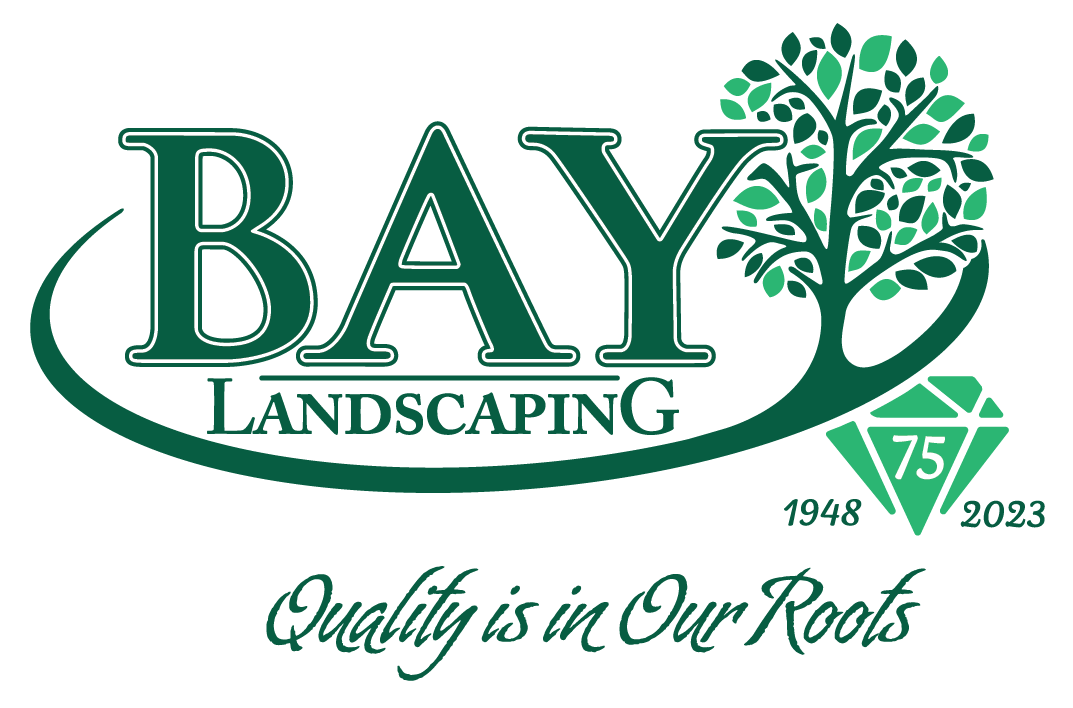Flowering shrubs give our mid-Michigan landscapes a welcome burst of color. But what if your flowering shrubs aren’t blooming like they should? In this article, we’ll explore six reasons your flowering shrubs may not be blooming. These include:
- Sunlight
- Poor Pruning
- Water Stress
- Shrub Age
- Soil Issues
- Pest Pressures
6 Possible Reasons Your Shrubs Aren’t Flowering
Although there are potentially dozens of reasons why flowering shrubs don’t bloom when they should or don’t even bloom at all, there are six causes that we see most often here in Bay City, MI, and nearby areas.
1. Your Flowering Shrub Isn’t Getting Appropriate Sunlight
In addition to water, sunlight is the thing plants need most to thrive. Light from the sun powers photosynthesis, the process that makes and stores energy to allow plants to grow and produce flowers when it’s time. Without enough sunlight, there isn’t enough energy for the plant to bloom. But how do you know if your flowering shrubs are getting enough sunlight?
The first thing you need to do is find out how much sunlight your flowering shrub needs. If you purchase your flowering shrub from a plant nursery or garden center, it should come with a tag that includes vital information, including which cultivar it is, watering instructions, planting instructions, mature size, and how much sunlight it needs.
Look for these terms on the tag to determine how much sunlight your flowering shrub requires:
- Partial Sun: These plants need 3-6 hours of direct sunlight daily
- Full Sun: These plants need a minimum of 6 hours per day, with some needing 8-10 hours of direct sun per day
In addition to these sunlight categories, some plants may be listed as “partial shade.” Sometimes this term is used interchangeably with “partial sun,” however, it often means that the plant needs to be shaded during the hottest, sunniest part of the day.
To ensure your flowering shrubs are getting all the sun they need, do your research or ask the plant experts at Bay Landscaping for guidance!

2. The Shrub Was Pruned Improperly or at the Wrong Time of Year
Improper pruning techniques can prevent your flowering shrub from blooming. Here are a couple of things to remember when you’re pruning your flowering shrubs:
Pruning at the Wrong Time of Year Can Prevent Flowering
Not all shrubs flower at the same time of year. Depending on the shrub, they can bloom in the spring, the summer, or even the fall and winter. If your shrubs are pruned at the incorrect time of year, it can interfere with proper flowering. As a rule of thumb:
- Prune spring flowering shrubs after the season’s flowers fade. Pruning in winter will remove next spring’s buds, so don’t do it!
- Prune summer flowering shrubs in early spring before they come out of dormancy. Summer flower buds will develop on the new spring-summer growth.
Looking for more flowering information? Check out our article on perennials. It includes information on hydrangeas, one of Michigan’s beautiful flowering shrubs.
Pruning Below the Node Will Prevent Flowering
The node is where the leaves, buds, and shoots emerge from a stem. Proper pruning requires that you prune above the node rather than below it. This becomes obvious when you consider that pruning below the node removes the buds. You can’t have flowers without buds!
It’s well worth it to prune your flowering shrubs correctly. Proper pruning will increase flower size and the number of flowers you’ll see bloom!

3. Water Stress is Inhibiting Shrub Blooming
Water stress can come about in two ways: underwatering, whether by neglect or drought, and overwatering. Here are a few tips for watering your flowering shrubs in the Great Lakes Bay City area:
- Follow proper Michigan watering guidelines as recommended
- Make sure the water is reaching the soil and percolating down to the shrub’s roots – watering just the leaves or only the top layer of soil will lead to most of the water evaporating
- Don’t oversaturate the soil – this prevents your shrub’s roots from getting the oxygen they need
4. Your Shrub is Too Young to Flower
When did you buy and plant your shrub? How mature is it? Most flowering shrubs devote energy to building a strong root system, sturdy branch structures, and green foliage during their first year. Your shrub may not be flowering because it needs some time to mature.
5. Poor Soil Condition is Interfering with Flowering
Good soil allows shrubs to get the water and nutrients they need from the earth efficiently and when they need them. If your shrubs aren’t flowering, could one of these soil issues be to blame?
Compacted Soil Can Inhibit Blooming
Soil that is too compacted may not be able to transport the moisture your shrub’s roots need. Compacted soil can also inhibit root growth and prevent the roots from absorbing oxygen. Consider aerating your soil for better water absorption, root development, and oxygen uptake.
You can also amend your soil by adding compost or other organic matter. Incorporating these materials helps build up healthy soil aggregates that reduce compaction.
Too Much Fertilizer Can Prevent Flowering
While plants need nutrients, they can have too much of a good thing. While you may think more is better, overfertilizing your shrubs can cause issues that prevent your shrub from blooming. Overfertilized plants can:
- Go through accelerated growth with an inadequate root system that can’t keep up with providing the water needed to support that growth
- Absorb excessive salts from the soil that can reverse the flow of water and cause dehydration
- Experience chemical burns to their roots which can cause the entire plant to die
Each of these issues degrades your shrub’s health and makes flowering nearly impossible.
Note: It’s worth mentioning that if your shrubs are growing in a well-fertilized lawn, they may not need additional fertilizer.
Wrong NPK Ratio in Your Fertilizer
While most fertilizers contain combinations of nitrogen, phosphorus, and potassium (N-P-K), the ratios of each are an important consideration depending on the plant you are fertilizing and whether there are nutrient deficiencies in the soil.
Since there are a multitude of N-P-K ratios and recommendations for which ratio is best for flowering shrubs, a soil test is an excellent place to start before you begin any fertilization regimen. Knowing the condition of your soil from the start will allow you to consider any nutrient deficiencies and appropriately tailor your fertilizer blend.
Want to add some color to your landscape? Read our article on shrubs with colorful blooms that can be planted in fall, including the brilliant yellow forsythia!

6. Pests Are Damaging Leaves and Flower Buds
Pests are never welcome in our Bay City, Midland, Saginaw, and surrounding area landscapes, especially when we can see the damage they’re causing. Pest damage due to chewing, sucking, and defoliation interferes with your shrubs’ ability to flower by forcing the shrub to use its energy to grow more leaves rather than develop flowers.
Damaged leaves aren’t the only way pests prevent our shrubs from blooming. Some Michigan pests, such as the black vine weevil and the red milkweed beetle, eat the flower buds themselves.
For more information, check out our recent article highlighting tree and common pest issues in the Mid-Michigan area.
Need Help Getting Your Shrubs to Bloom?
Bay Landscaping can get your shrubs flowering the way they’re supposed to! Our team of plant experts can help you by:
- maintaining your current landscape so flowering shrubs get the regular pruning, sunlight, water, nutrients, and insect pest management treatments they need,
- designing and installing a new landscape or garden area with blooming shrubs that will thrive where they’re planted, or
- recommending a new flowering shrub from our nursery to replace the one you’ve lost or that isn’t performing well in its current location.
If you’re tired of flowering shrubs that won’t bloom, contact us or visit our Bay City plant nursery today!






